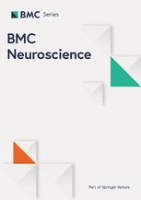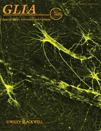
NEUROSCIENCE
Scope & Guideline
Navigating the intricate landscape of the brain.
Introduction
Aims and Scopes
- Neurobiology of Disease:
Investigation into the mechanisms underlying various neurological diseases, including Alzheimer's, Parkinson's, and multiple sclerosis, with a focus on molecular and cellular pathways. - Neurodevelopment and Plasticity:
Research on the developmental processes of the nervous system, including neurogenesis, synaptic plasticity, and the impact of environmental factors on brain development. - Neuropharmacology:
Exploration of the effects of pharmacological agents on the nervous system, including studies on drug mechanisms, therapeutic potentials, and adverse effects related to neuroactive substances. - Cognitive Neuroscience:
Studies examining the neural correlates of cognitive functions, including memory, attention, decision-making, and emotional processing, often utilizing advanced imaging techniques. - Neuroinflammation and Immunology:
Research focusing on the role of neuroinflammation in brain health and disease, including the immune response in neurological disorders and the impact of systemic inflammation. - Neurophysiology and Electrophysiology:
Investigations into the electrical properties of neurons and neural circuits, utilizing techniques such as electrophysiology, EEG, and fMRI to explore brain activity. - Behavioral Neuroscience:
Studies linking behavior to neural activity, including animal models to understand the underlying mechanisms of behavior and its modulation by various factors. - Translational Neuroscience:
Research aimed at bridging basic neuroscience findings with clinical applications, focusing on the development of novel therapeutic strategies for neurological conditions.
Trending and Emerging
- Gut-Brain Axis Research:
Increasing investigations into the interactions between gut microbiota and brain function, revealing how metabolic and inflammatory processes in the gut influence neurological health. - Neuroinflammation and Immune Modulation:
A growing focus on the role of neuroinflammation in various neurological disorders, exploring therapeutic interventions that target immune processes. - Advanced Neuroimaging Techniques:
Emerging interest in utilizing advanced neuroimaging techniques, such as functional MRI and machine learning for analyzing complex neural data. - Neurotechnology and Brain-Computer Interfaces:
Exploration of novel neurotechnologies, including brain-computer interfaces, that aim to restore or enhance neural function and improve quality of life for individuals with neurological impairments. - Psychobiotics and Mental Health:
Research into the effects of probiotics and prebiotics on mental health, particularly how gut microbiota can influence mood and cognitive functions. - Environmental and Lifestyle Factors:
Increased emphasis on how environmental stressors and lifestyle choices, such as diet and exercise, affect neuroplasticity and cognitive health. - Translational Research in Neurodegeneration:
A trend towards research that connects basic science findings to clinical applications, focusing on developing novel therapeutic strategies for neurodegenerative diseases.
Declining or Waning
- Basic Neuroanatomy:
Research focused solely on basic neuroanatomical studies has declined as the field shifts towards more integrative and functional approaches that connect structure with behavior and pathology. - Traditional Neuropharmacology:
Studies examining single-drug effects without considering polypharmacy or complex interactions are becoming less common, as the field increasingly recognizes the importance of multi-drug effects and personalized medicine. - Animal Models of Neurodegeneration:
While animal models remain important, there has been a noticeable shift towards using more sophisticated models that incorporate genetic, environmental, and behavioral factors rather than traditional single-strain models. - Neuroimaging Techniques:
Research solely focused on traditional neuroimaging methods without addressing functional implications or integrating data with other modalities is becoming less prevalent. - Static Behavioral Studies:
There is a waning interest in static behavioral studies that do not incorporate dynamic or longitudinal approaches, as researchers seek to understand the temporal aspects of behavior and its neural underpinnings.
Similar Journals

ASN Neuro
Fostering Discoveries in the Complex World of Brain FunctionASN Neuro is an esteemed academic journal published by Frontiers Media SA, focusing on critical advancements in the fields of neurology and neuroscience. Since its inception in 2009, it has established itself as an Open Access platform dedicated to fostering the dissemination of knowledge and research findings that address the complexities of the nervous system. With an impressive impact factor and consistently ranking in the top quartiles of its categories—Q1 in Neurology (clinical) and Q2 in Neuroscience (miscellaneous)—ASN Neuro is recognized for its high-quality publications that cater to the evolving challenges in clinical neurology and general neuroscience. Currently, it ranks 68th out of 400 journals in Clinical Neurology and 28th out of 113 in General Neuroscience, affirming its reputable position within the academic community. Researchers, professionals, and students alike are encouraged to contribute to and benefit from this impactful journal as it presents a unique opportunity to engage with cutting-edge research, innovative methodologies, and insightful reviews in the ever-evolving landscape of brain science.

BMC NEUROSCIENCE
Illuminating the Pathways of Brain Function and DisordersBMC NEUROSCIENCE is a prominent open access journal dedicated to the dissemination of high-quality research within the dynamic and rapidly evolving field of neuroscience. Published by BMC, a well-respected leader in open access publishing, this journal facilitates the free exchange of knowledge since its inception in 2000. With the ISSN 1471-2202, BMC NEUROSCIENCE aims to address the diverse interests of the neuroscience community by covering a broad spectrum of topics, ranging from cellular and molecular neuroscience to general neurological studies, thus appealing to researchers, professionals, and students alike. Although it currently holds a Q4 ranking in Cellular and Molecular Neuroscience and a Q3 rank in miscellaneous Neuroscience categories, its commitment to advancing the understanding of brain function and disorders remains steadfast. The journal features a user-friendly Open Access model, ensuring that critical research findings are readily accessible to everyone, fostering collaboration and innovation in the field. As the journal continues to evolve towards its convergence years of 2024, it aspires to enhance its impact and global reach, making it a valuable resource for anyone interested in advancing neuroscience research.

Revista Mexicana de Neurociencia
Cultivating Dialogue in the Evolving Field of NeuroscienceThe Revista Mexicana de Neurociencia, published by the ACAD MEXICANA NEUROLOGIA, serves as a pivotal platform for the dissemination of research within the field of neurology and neuroscience. Although it was active from 2008 to 2014 and is no longer covered in Scopus, the journal still holds a significant place in the academic community, addressing critical topics relevant to both clinical and experimental neurology. With an emphasis on advancing knowledge in neuropsychology and public health, this journal targets researchers, professionals, and students alike, fostering an interdisciplinary dialogue that can enhance the understanding of neurological conditions within Mexico and beyond. As it stands, the journal is not open access, which may present challenges for accessibility, yet its affiliation with recognized academic standards underlines its commitment to quality research. This platform once provided insights that can inform practice and stimulate innovative approaches in the management of neurological disorders, underscoring its importance in the evolving landscape of neuroscience.

Eneurobiologia
Fostering Collaboration in Neurobiological ResearchEneurobiologia is an esteemed open-access journal published by UNIV VERACRUZANA, INST INVESTIGACIONES & EDUCACION, dedicated to advancing research in the vibrant field of neurobiology. With its launch in 2010, the journal aims to disseminate high-quality, peer-reviewed research articles that explore the complexities of neural systems, neurodevelopment, and neurodegenerative disorders. By providing a platform for both established researchers and emerging scholars, Eneurobiologia fosters interdisciplinary collaboration and knowledge exchange within the scientific community. Its open-access model ensures that valuable findings are accessible to a global audience, promoting the widespread application of neurobiological research. As a crucial resource for students, professionals, and researchers alike, Eneurobiologia plays a pivotal role in shaping the future of neurobiological studies and enhancing our understanding of the brain and nervous system.

Translational Neurodegeneration
Bridging Discovery and Clinical Insight in NeuroscienceTranslational Neurodegeneration, an esteemed journal in the field of neuroscience, is published by BMC and has been an open access platform since 2012, delivering high-quality research from its base in the United Kingdom. With an impressive impact factor reflecting its significant contributions, this journal focuses on critical advancements in cellular and molecular neuroscience, cognitive neuroscience, and clinical neurology, boasting a Q1 ranking across all these categories as of 2023. Researchers and professionals benefit from its extensive reach, characterized by exceptional Scopus rankings that place it in the top percentile of its field. The journal serves as a vital resource for academics and healthcare practitioners alike, aiming to bridge the gap between laboratory discoveries and clinical applications, thereby enhancing understanding and treatment of neurodegenerative diseases. With its commitment to open access, Translational Neurodegeneration ensures that its published research is accessible to a global audience, promoting collaboration and knowledge exchange within the scientific community.

Neuroscience Bulletin
Pioneering insights into neural mechanisms and treatments.Neuroscience Bulletin is a prestigious academic journal published by SPRINGER, focusing on the dynamic and interdisciplinary field of neuroscience. Established in 2005, this journal has consistently provided a platform for groundbreaking research, showcasing contributions that span various aspects of neuroscience, physiology, and medicine. With an admirable impact factor and recognition as a Q1 journal in both Medicine and Neuroscience categories for 2023, it ranks highly in the Scopus metrics, reflecting its importance in advancing scientific knowledge and practice. Researchers and professionals alike benefit from its cutting-edge articles, which are accessible through traditional subscription models. The Neuroscience Bulletin plays a crucial role in disseminating significant findings and fostering collaboration within the global research community, making it an essential resource for anyone engaged in the exploration of neural mechanisms, treatments, and innovations.

SYNAPSE
Unlocking the Secrets of the Nervous SystemSYNAPSE, an esteemed journal in the field of Cellular and Molecular Neuroscience, is published by Wiley and serves as a vital platform for disseminating groundbreaking research in neuroscience. Established in 1987, this journal has been pivotal in exploring the intricate mechanisms governing synaptic function and neural communication, contributing to our understanding of the nervous system. With an ISSN of 0887-4476 and an E-ISSN of 1098-2396, SYNAPSE is indexed in Scopus and currently holds a Q4 quartile ranking in its category, reflecting its niche yet significant presence within the research community. Despite its recent ranking in the 21st percentile among its peers, the journal’s commitment to quality and innovation remains unwavering. It is published from Hoboken, New Jersey, and although it is not an open-access journal, it provides invaluable insights and critical reviews that are pivotal for researchers, professionals, and students alike who seek to advance their knowledge in the dynamic field of neuroscience. Join us in contributing to the ever-evolving discourse in cellular and molecular neuroscience through SYNAPSE.

GLIA
Elevating the Science of Neuroscience Since 1988GLIA is a premier journal in the fields of Cellular and Molecular Neuroscience and Neurology, published by WILEY. With an impressive track record since its inception in 1988, GLIA has become an essential resource for researchers and professionals interested in the complexities of glial cells and their roles in the nervous system. Featuring articles that encompass a wide range of topics, from basic research to clinical implications, the journal is committed to advancing our understanding of neurological functions and disorders. Although not an open access publication, GLIA maintains its reputation with a significant impact factor, consistently ranking in the Q1 category as noted in 2023 Scopus rankings. With its comprehensive scope and high-quality peer-reviewed content, GLIA serves as a vital platform for disseminating groundbreaking research in the ever-evolving landscape of neuroscience.

JOURNAL OF COMPARATIVE NEUROLOGY
Connecting Minds: Comparative Insights in NeuroscienceThe Journal of Comparative Neurology, published by Wiley, stands as a cornerstone in the field of neuroscience since its inception in 1911. With an ISSN of 0021-9967 and an E-ISSN of 1096-9861, this esteemed journal spans a comprehensive scope of comparative neuroanatomy, neurophysiology, and neural development, providing critical insights into the intricate workings of nervous systems across species. The journal has earned a prestigious Q2 ranking in the category of general neuroscience for 2023, showcasing its substantial impact, reflected in its Scopus ranking of #47 out of 113 journals in its field. Researchers and professionals examining evolutionary patterns, neural structure functions, and comparative studies will find this journal an invaluable resource. Although it does not provide open access, its rigorous peer-review process ensures the publication of high-quality research that is crucial for advancing knowledge in comparative neurobiology. With a commitment to fostering scholarly exchange, the Journal of Comparative Neurology remains dedicated to exploring the complexities of the nervous system through a comparative lens, making it a vital platform for the global neuroscience community.

eNeuro
Championing open access for transformative neurobiological insights.eNeuro is a prominent open-access journal published by the Society for Neuroscience, dedicated to advancing the field of neuroscience through the dissemination of high-quality research. Launched in 2015, it reflects its commitment to accessibility by providing a platform for innovative studies and advancements in neurobiology. The journal holds a strong reputation, achieving a Q1 ranking in Medicine (miscellaneous) and a Q2 in Neuroscience (miscellaneous) as of 2023, with Scopus rankings placing it at #56 out of 113 in General Neuroscience, marking it in the 50th percentile. With its convergence to cover articles from 2014 to 2024, eNeuro continues to serve as a vital resource for researchers, professionals, and students alike, offering a comprehensive hub for the latest discoveries and theoretical developments in neuroscience. As part of its mission, eNeuro aims to foster collaboration and inspire the academic community with openly accessible content, making significant contributions to scientific discourse.